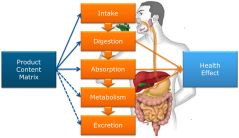Thesis subject
Modelling
Topic 1. Processing jams with the microwave.
In recent literature several articles can be found on processing of jams with a microwave. What is the effect of this new method on the quality of the jams? Many healthy compounds degrade during processing and during conventional methods fruits are heated quite severely to make a jam. A thesis topic can be to study whether microwave-processing lead to jams with a higher content of healthy compounds.
Furthermore we would like to see what happens when processing conditions or changes in the composition are made. The temperature distribution of microwave treatment differs from cooking on a heating plate. And the composition of fruits and the addition of sugar and pectin influence the texture, shelf life and sensorial properties of the jams. A thesis topic is to study the effects of changes in processing conditions and composition on quality attributes of jams.
Finally we would like to use the knowledge of different processing methods and ingredients on the quality of jams to make mathematical models. With these models we would like to predict the effects of jam composition and processing method on texture, sensorial and nutritional properties. This knowledge can be used to optimize the jam processing method and composition to obtain a high quality product.
For more information please contact Jenneke Heising.
Topic 2. Influence of preparation on the quality of ready to-eat meals.
In consumer observations was seen that consumers do not always prepare a ready-to-eat meal according to the instructions given on the package of the food. This could lead to quality defects and changes in the nutritional composition of the meal. For example, problems with moisture loss, burning of sauce or a large loss of healthy compounds may be seen during preparation with abnormal conditions.
One of the research topics might be to conduct a consumer research to obtain more data about the way consumers prepare the ready-to-eat meals, or to identify possible quality defects that occur during preparation.
Other research topics involve experimental work. In the lab we would like to study the effect of different processing conditions on the quality of foods, for example by studying the nutritional content or measuring quality attributes. Mathematical models might be used to describe the quality changes.
For more information please contact Jenneke Heising.
Topic 3. Modelling Food Digestion in Relation to Health.
Digestion of food products consists of the degradation of the food structure by mechanical and enzymatic action. By this process nutrients become available for absorption. Health aspects related to digestion are e.g. the conversion and absorption of phytochemicals from plant sources, the uptake rate of simple sugars from the digests, etc. Studying the effect of the food product properties on these health aspects can be done by in vivo or in vitro digestion studies. In addition to this also in silico digestion models can be constructed to describe changes of the food in the human body. Such a model might be linked in the future with food properties related to health. Also the understanding the results of by in vivo or in vitro digestion studies can be improved by comparing it to the parameters of such an in silico model. In literature not many mechanistic physiological models have been developed for this purpose. This project aims at describing the state of the art in literature on digestion modelling and on further developing such models for the purpose of healthy food design.

For more information please contact Matthijs Dekker.
Topic 4. Effect of heat treatment on In vitro bioaccessibility of ß-carotene/ vitamin C in cape goose berry.
Previous studies of vitamin C and ß-carotene on gooseberry have given evidence on important contents of this health-promoting compounds in cape gooseberry. ß-carotene has shown an increase during heat treatment that could be related to the degradation of binds of carotenes with other molecules. This bind degradation can lead to increase bio-availability of vitamin C and ß-carotene.
Aim
Evaluate In vitro bioavailability ß-carotene y/o vitamin C degradation during thermal processing.
For more information please contact Mary Luz Olivares Tenorio.